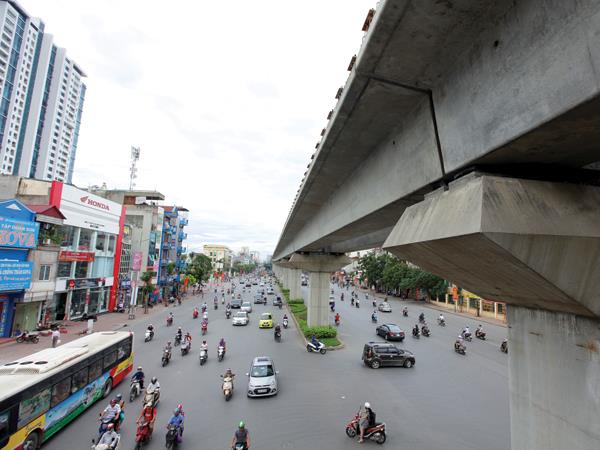VietNamNet Bridge - A series of projects that are granted ODA from the government are behind schedule, so the government plans to use another method to grantODA to local governments.

According to the Finance Ministry, the transport sector uses the most ODA capital, accounting for about 20% of the total foreign loans.
The change aims to improve the efficiency of ODA use and curb rampant investment, project delays and the increase of capital in ODA-funded projects in many provincies in the country.
Truong Hung Long, Director of the Debt and External Finance Management Agency of the Ministry of Finance, said in the past 10 years, the government has disbursed $15 billion in preferential loans (ODA) for projects of local governments, of which 92.2% was granted to local governments.
Because of the ODA grant mechanism, most of the ODA-funded projects are ineffective. Most of these projects, particularly transportation projects, are implemented very slowly and the capital increases highly compared to the initially estimated amount.
Many experts and the media have named many specific projects.
Increasing the accountability of local governments in using ODA
Dr. Huynh The Du, a well-known economist in Vietnam, said the application of the ODA reload mechanismis a reasonable solution.
"This is the solution for screening and ranking projects in many aspects such as effectiveness, fairness ... before giving funding to local governments," Du said.
Du said to get ODA from the central government, localities will have to calculate everything from the pace of construction, how to implement the project, management capacity, etc... Moreover, when they have to repay the loans, instead of being allocated, the local government will have to carefully consider the efficiency of investment.
Dr. Nguyen Thanh Do, former director of the Debt and External Finance Management Agency of the Ministry of Finance, said this mechanism will increase the responsibility of the local governments in the use of ODA loans.
"When the responsibility is enhanced, hopefully the efficiency will rise too, avoiding waste, spreading investment and also the dependence of localities," Do said.
However, Do noted that the ODA should be allocated or re-loaned depending on the nature of each project because there are many projects that serve welfare and environmental purposes.
Dr. Huynh The Du added that screening of projects before granting ODA loans will also help guarantee the ability to claim back money from local governments, thereby enhancing the ability to repay foreign debt of Vietnam.
According to the Finance Ministry, the transport sector uses the most ODA capital, accounting for about 20% of the total foreign loans.
The Nhon- Hanoi Railway Station metro project has the initial capital of 783 million euros but the capital increased to 1,176 million euros later (up by nearly 400 million euros).
Similarly, the Cat Linh - Ha Dong railway project, after years of implementation, has had capital increase by more than $315 million.
In HCM City, the metro project is one of the most expensive railway projects in the world.
Specifically, the project to build the metro line 1 (Ben Thanh - Suoi Tien) had the initial investment, approved in 2007, of more than VND17,387 billion but later the figure increased to VND47,325.2 billion in September 2011.
The Ben Thanh Tham Luong metro route also had its capital increased from $1.3 billion to over $2 billion.
| related news |
|
Preferential ODA loans for VN to be cut off from July 2017 JICA: Japan to stop aid if corruption found |
Nam Nguyen